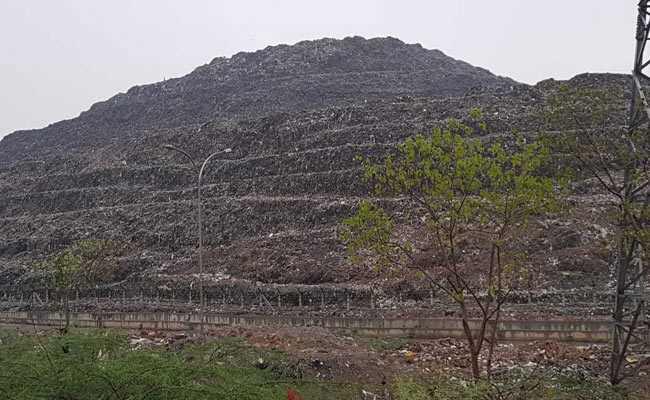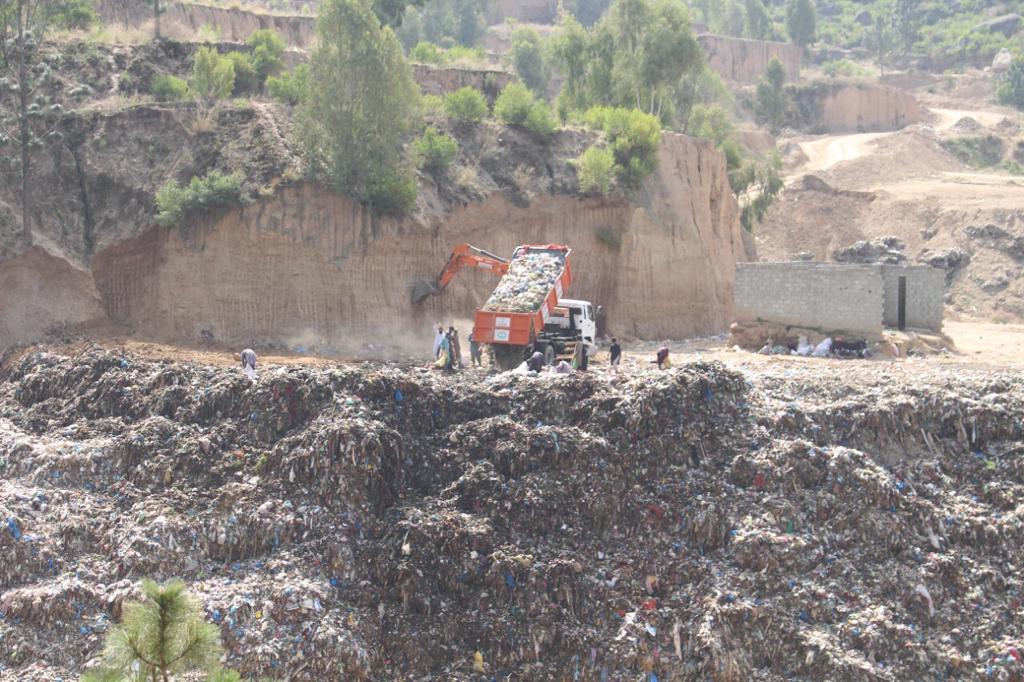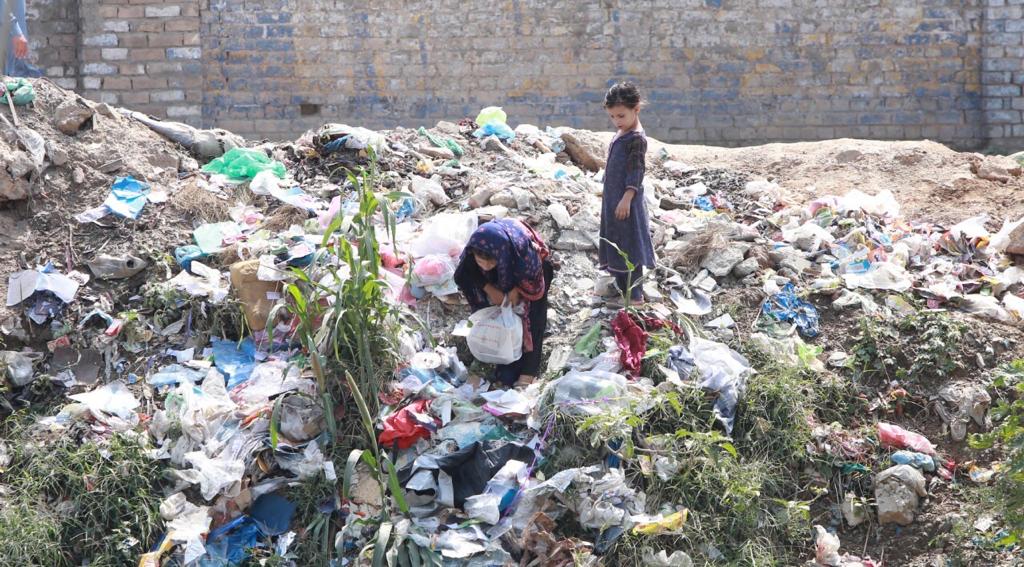New Delhi/Islamabad: Plastic pollution is choking cities and rural areas across India and Pakistan, piling up in landfills, choking streams and drainage ditches, poisoning animals, and polluting farm fields.
Despite some efforts to ban single-use plastics, the problem remains a huge menace to public health, wildlife, and the environment, experts said, suggesting urgent joint efforts to check it.
“Plastic pollution has emerged as the biggest challenge for mankind. It poses grave health hazards and destroys the environment beyond repair. The menace of plastic pollution is very lethal,” said Ajay Dubey, a prominent green activist in India.
While India has set a global example by banning the manufacturing, sale, and use of 19 single-use plastic items like earbuds, plastic sticks for balloons, plates, cups, and straws from July 1, 2022, the country still generates 3.5 million tonnes of plastic waste annually, and the per capita plastic waste generation has almost doubled over the last five years, Union Environment Minister Bhupender Yadav had said in April 2022.
“Plastic pollution is known for causing a lot of problems in urban areas. It chokes sewage and drainage pipes, causes diseases in people and in animals too. Now plastic pollution is fast spreading in rural areas as well,” Dubey said.
In Pakistan, plastics account for 65 percent of the total waste, according to a report by WWF Pakistan, which describes itself as one of the largest conservation organisations in Pakistan.
Some 55bn plastic bags are being used in the country with an expected annual increase of 15 percent in their usage, the report says.

As much as 65 percent of waste that ends up on beaches along Pakistan’s coast includes water bottles, caps, plastic bags, and packaging, the report says. An estimated 8 million tons of plastic waste enter the oceans every year.
“There are so many impacts of plastic pollution. There are 12 big cities in Pakistan in which 60-70 percent of the population of the country lives. Plastic chokes sewage lines as they don’t get decayed. If sewage lines get damaged, they pollute the freshwater or jam the drainage system which in turn results in
health hazards. There is a direct health impact of plastic pollution in urban areas,” said Nadeem Ahmad, Climate Change Policy manager at British High Commission, Islamabad.
He said rivers are affected due to plastic pollution in rural areas.
“Plastic pollution also disturbs crop production.
Plastic pollution is like air pollution. Immediately one may not realize its effect, but in the long run, its harmful health hazards are quite visible,” Ahmad said.
Experts in both countries called for swift action to tackle this growing problem.
“India and Pakistan need to take immediate steps to regulate authorised and unauthorised production of plastics and its usage. There is an urgent need to make people aware of the serious impact of plastic pollution which is causing irreparable damage to the environment,” Dubey said.
Solid waste management has emerged as the biggest challenge for the civil authorities in many cities in India and Pakistan, experts and individuals have said.
For instance, people living near landfill sites in India’s capital city of Delhi say the situation due to growing waste, especially plastic, is worsening with every passing day.
“I have been living here for the past many years. The situation is worsening day by day. The mound of garbage, formed from the waste collected from Delhi, is increasing. It is horrifying to live in places like such. The administration must find a viable solution to deal with the waste,” said Abhinav Singh, who lives near the Ghazipur landfill site in Delhi.
Commissioned in 1984, the Ghazipur landfill is the biggest garbage dump in Delhi and it holds over 140 lakh tons of waste. The other two sites are Bhalswa and Okhla landfills started in 1994.
Pakistan generates approximately 49.6 million tons of solid waste a year, which has been increasing by more than 2.4 percent annually, according to the International Trade Administration (ITA), Department of Commerce, United States of America.
Like other developing countries, Pakistan lacks waste management infrastructure, creating serious environmental problems, said an article dated January 27, 2022, posted on the ITA website.
Most municipal waste is either burned, dumped, or buried on vacant lots, threatening the health and welfare of the general population, it said.
The Government of Pakistan estimates that 87,000 tons of solid waste is generated per week, mostly from major metropolitan areas, the article said.
“Karachi, Pakistan’s largest city, generates more than 16,500 tons of municipal waste daily. All major cities face enormous challenges on how to manage urban waste. Bureaucratic hurdles, lack of urban planning, inadequate waste management equipment, and low public awareness contribute to the problem,” it reads.
Karachi, Pakistan’s largest city, utilizes three sanitary landfill sites, while Lahore, the country’s second-largest city, has two, the ITA said.

In Khyber Pakhtunkhwa, the Water and Sanitation Services Peshawar (WSSP) is planning to build a sanitary landfill. Baluchistan, with a population of 6.9 million, has no significant infrastructure for the waste management system, it said.
Much of Pakistan’s solid waste does not reach final disposal sites.
In Pakistan, much of the waste generated is recovered for recycling, mostly by scavengers, before it ever reaches disposal points, the article pointed out.
Experts in both countries suggested setting up a common task force, raising awareness among the masses, setting environment-friendly standards for plastic-producing industries, creating tough laws to check littering of plastics, and following global best processes
to safely dispose of millions of tonnes of plastic waste generated in both nations annually.
Some opined taxing plastic production as a probable solution to tackle the growing plastic waste crisis.
The world generates around 350 million tonnes of plastic waste per year. That means that about 2% of waste is traded, according to an article dated October 11, 2022, written by Hannah Ritchie and shared on the website of Global Investigative Journalism Network (GIJN).
(This article is produced as per a fellowship organised by the US-based East West Center)









